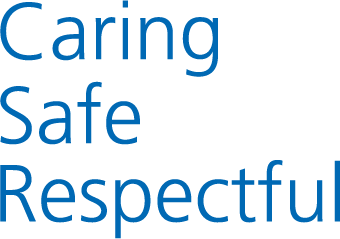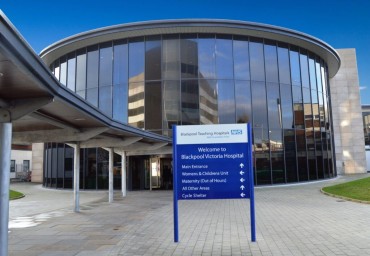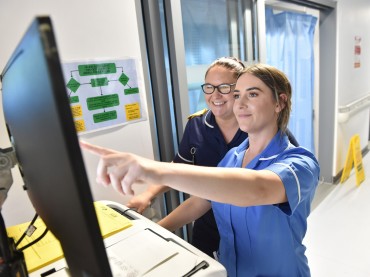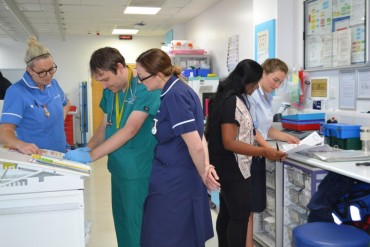This area contains all the information you will need to know and be aware of when you are discharged from the hospital.
Community midwife visits
A midwife will visit you at home the day after you are discharged home from hospital. She will then arrange an appointment for day 5 for weighing the baby, the baby bloodspot test and to review mum.
Ongoing care will also be planned at this visit. Your midwife will handover care to the community health visitors approximately three to four weeks after you have had your baby. Ongoing care will also be planned at this visit. If you have need of a midwife, contact 01253 956820.
Our community midwife teams work 8.30am to 4.30pm:
|
Fylde Team (Kirkham/St Annes) |
01253 957299 |
|
Blackpool South Team |
01253 957688 |
|
Blackpool Central West Team |
01253 956517 |
|
Blackpool North Team |
01253 956517 |
|
Fleetwood Team |
01253 956068 |
|
Poulton/Thornton Cleveleys Team |
01253 951545 |
Child Health Book
You should take the Red book to any appointments you have with your baby.
Registering a birth
Infant feeding
For families expecting babies soon, it has never been more important than it is right now to understand:
- Prolonged skin to skin contact, no matter how baby is born or fed, helps baby's heart rate, temperature and breathing, gives better immunity and calms mum and baby
- Every baby could benefit from their mother's first milk, known as colostrum. This can be expressed and stored near the end of your pregnancy and given to baby
- Babies who are breastfed have more protection from infection. All breastmilk is valuable, every drop counts
For more information, ask your midwife, health visitor or breastfeeding support.
- Information for those who are breastfeeding
- Information for those who are formula feeding their babies
- Guidance on faltering growth in children
- Better births: After the birth
Safer sleeping/ reducing the risk of cot death
This information has been put together to help you keep your baby safe as they sleep. Having the right information and understanding the risks can help you to do this.
Each year around 200 babies will die unexpectedly before their first birthday. Many of these deaths are classified as Sudden Infant Death Syndrome (SIDS) or cot death, which usually happens when babies are sleeping.
No-one wants to think about this happening to their baby and we don’t want you to spend this special time worrying. You can follow the six steps whenever you put your baby down to sleep to reduce the risks.
We know that every baby is different and if you have any questions or worries please speak with your community midwife or health visitor.
Your Community Midwife and Health visitor may ask to see where your baby sleeps and will conduct a home safer sleeping assessment with you. Please click the links below for more information.
- Safer Sleep for Baby (external link)
- Safer Sleep for Baby easy-read version (external link)
Babies cry. You can cope.
Crying is how your baby communicates. You can cope. Find out how.
Please also watch this video with your partner. If you would like to discuss this further please speak with your midwife or health visitor.
Bonding with your baby
Jaundice
Neonatal BCG vaccination
GBS Group B Strep
GBS is one of many bacteria that can be present in our bodies. It does not usually cause any harm. When this happens, it's called carrying GBS, or being colonised with GBS.
It's estimated between two and four women in every 10 in the UK carries GBS in their digestive system or vagina.
Around the time of labour and birth, many babies come into contact with GBS. Most are unaffected, but a small number can become infected and very unwell.
You will be offered screening and baby to be observe closely following birth. When you go home your will be advised to look out for symptoms include:
- Being floppy and unresponsive
- Grunting when breathing, or working hard to breathe when you look at their chest or tummy
- High or low temperature
- Very fast or slow heart rate
- Very fast or slow breathing
- Changes in their skin colour, including blotchy skin
- Not feeding well or vomiting milk
- Crying and unable to settle
Seek medical attention if your baby develops any of these symptoms.
Bathing your baby
Baby blues
Advice following caesarean section
Most women can leave hospital one or two days after having a caesarean section. While in hospital:
- You'll be given painkillers to reduce any discomfort
- You'll have regular close contact with your baby and can start breastfeeding
- You'll be encouraged to get out of bed and move around as soon as possible
- You can eat and drink as soon as you feel hungry or thirsty
- A thin, flexible tube called a catheter will remain in your bladder for at least 12 hours
- Your wound will be covered with a dressing for at least 24 hours
When you're well enough to go home, you'll need to arrange for someone to give you a lift as you will not be able to drive for a few weeks.
This is more information on how to care for your wound recovery after a caesarean section.
VTE: What is venous thrombosis?
A thrombosis is a blood clot in a blood vessel (a vein or an artery). Venous thrombosis occurs in a vein. Veins are the blood vessels that take blood back to the heart and lungs whereas arteries take the blood away.
A deep vein thrombosis (DVT) is a blood clot that forms in a deep vein of the leg, calf or pelvis.
After the birth of your baby, if you:
- Have a very long labour (more than 24 hours) or have had a caesarean section, lose a lot of blood after you have had your baby or receive a blood transfusion
- If you were on heparin before the baby’s birth, you are likely to be advised to continue this for six weeks afterwards
It is important to be as mobile as possible after you have had your baby and to avoid becoming dehydrated.
Read about reducing the risk of venous thrombosis in pregnancy and after birth.



